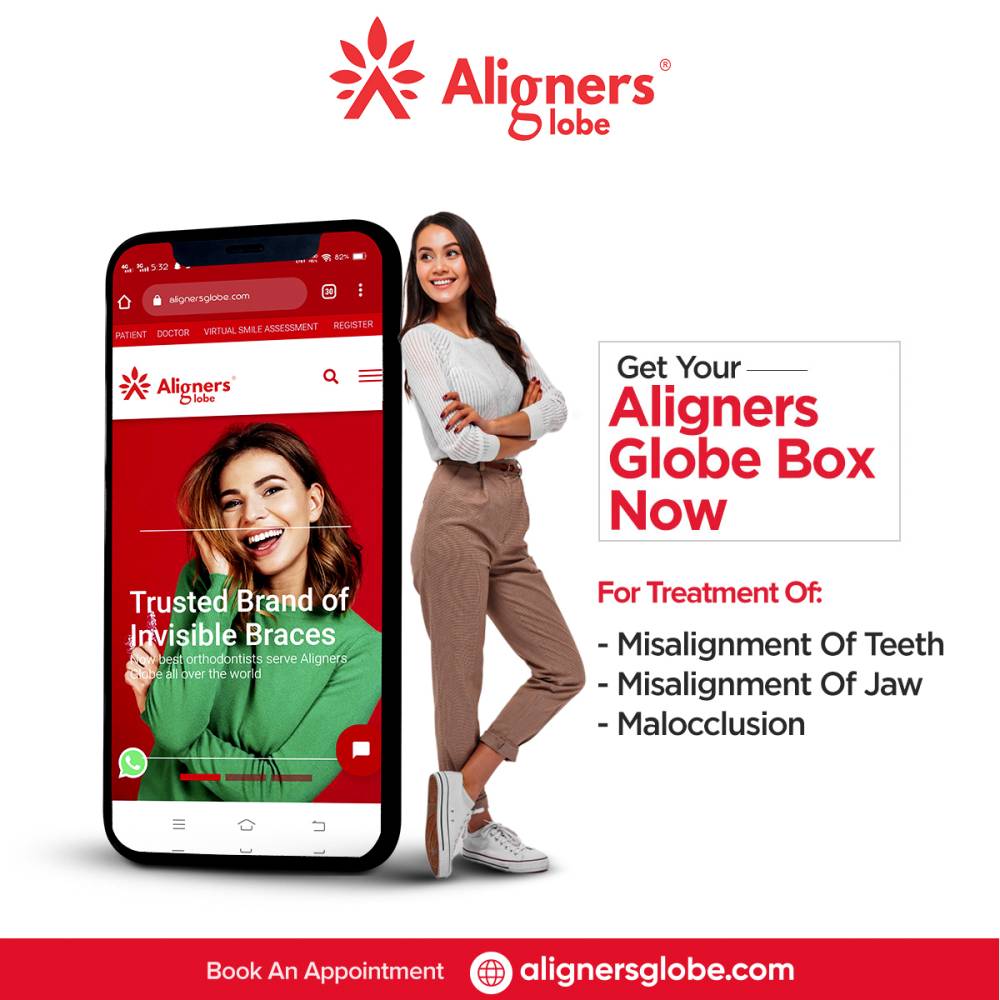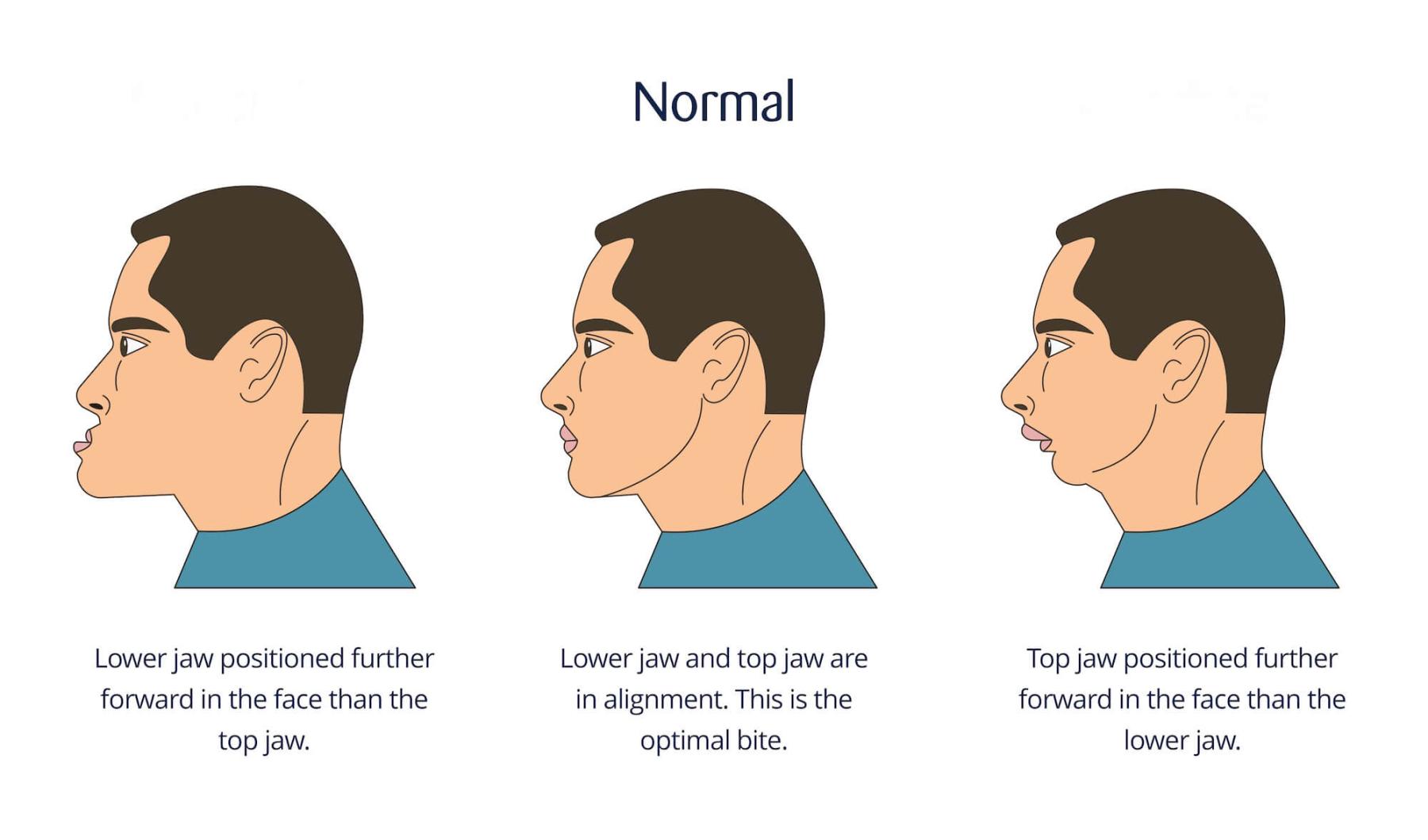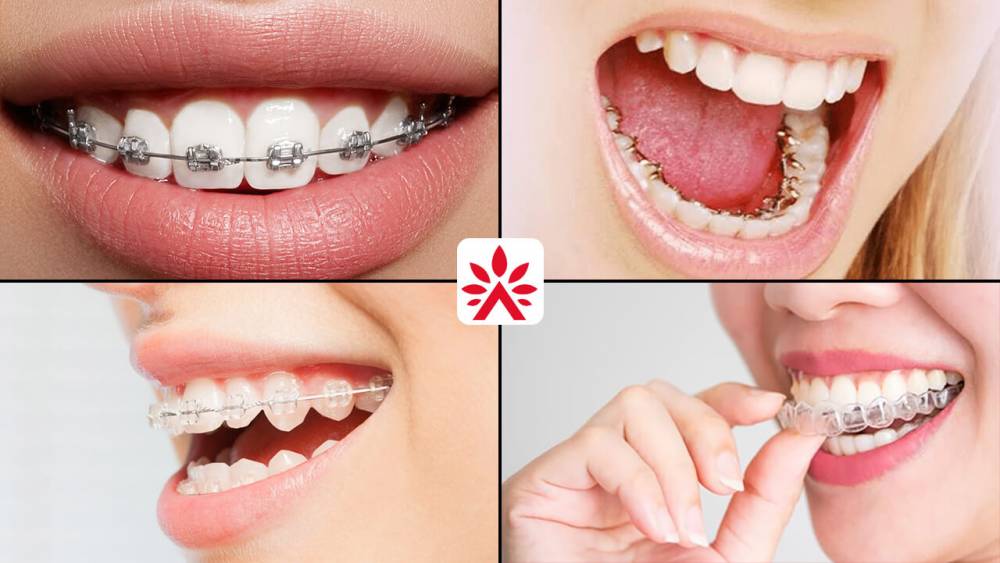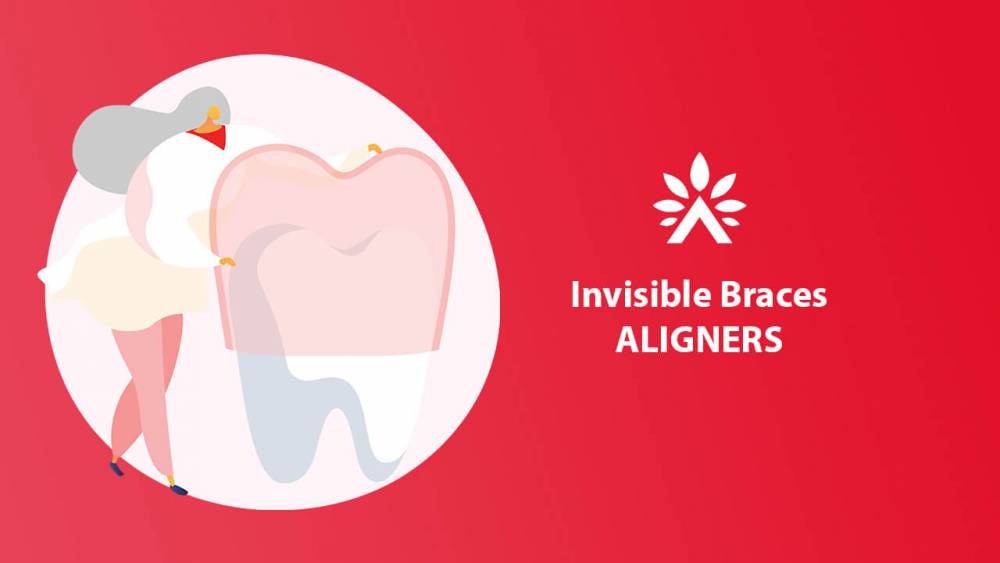
Reasons of misalignment of Teeth, malocclusion or misalignment of jaw and its treatment
What Are The Reasons Of Misalignment Of Teeth, Malocclusion Or Misalignment Of Jaw And Its Treatment?
The main secret behind a beautiful perfect smile is a healthy and straight set of teeth. Dental Occlusion or Aligned teeth refers to the alignment of the teeth in the upper and the lower jaw when teeth come in contact with each other during speaking, mastication, and deglutination. Proper alignment is important for a healthy and aesthetically pleasing smile. It is also very important for everyday functions like speaking, eating, and maintaining proper oral hygiene, making the overall quality of life good.
For many reasons, the misalignment of jaw or misalignment of teeth, also known as malocclusion, occurs when teeth in both jaws fail to come into contact properly. Malocclusion is a very common problem that is faced by a lot of people.
Causes of misalignment of teeth and misalignment of jaw
Genetics
Misalignment of teeth is hereditary most of the time, which means that it passes from one generation to the next generation.
Tooth- Jaw Size Discrepancy
The most common cause of malocclusion is a jaw-tooth size discrepancy. It is when there is a huge gap between the teeth and large size of jaws causing spacing between the teeth or vice versa, on the other hand, small jaws with too big wide teeth cause crowding of teeth. Crowding makes it impossible for the teeth to erupt into normal occlusion.
Para functional Habits
Childhood habits such as tongue thrusting, thumb sucking, nail biting or using an instrument, mouth breathing, using pacifiers more than three years of age, and prolonged use of a bottle for feeding is also leading cause of misalignment of teeth.
Genetic Disorders
Genetic disorders such as cleft lip and palate and other syndromes like Down’s syndrome, cleidocranial dysplasia, etc. can cause the absence of teeth or the presence of extra and abnormal teeth, ultimately leading to misalignment of teeth.
Trauma to jaws and teeth
Any major accident or trauma to the jaws, especially during the development stage of childhood, can lead to misalignment of the jaws, which in turn causes misalignment of teeth.
Timings of Tooth Loss in mixed dentition phase (6-13years)
Premature loss of primary or milk teeth can lead to space generation which will make the neighboring teeth drift and close the space, making it hard for their succedaneous teeth to erupt in normal occlusion. Not only primary teeth but early permanent teeth extraction also creates space, which, if not filled by any prosthesis, can also lead to the drifting of neighboring teeth into the space, causing malocclusion to occur.
Temporomandibular Joint (TMJ) Disorders
Many TMJ disorders or trauma to the TMJ can lead to jaw discrepancy, which in turn can cause malocclusion of teeth.
Tumors in jaws
Tumors in the oral cavity or on the jaws can displace existing teeth, resulting in tooth misalignment.
Symptoms and signs of misalignment of teeth
1. Abnormal or misalignment of teeth.
2. Facial appearance is improper.The lower jaw is prognathic (mandible is forward than the upper jaw) or retrognathic ( mandible is far away back to the upper jaw). Sometimes only the upper jaw is forward or short but the lower jaw is in the correct position. In some patients, one side of the face is smaller than the other half side, and in some cases jaws,' bone symmetry is moving out of the direction.
3. Difficulty in everyday functions like chewing, speaking (lisp generation), and swallowing.
4. Breathing through the mouth instead of the nose.
5. Self-esteem is shattered in public speaking.
6. Difficulty in cleaning teeth, leading to more serious problems like dental caries and gum diseases.
Symptoms and signs of misalignment of jaw
In addition to difficulty in eating, breathing, and talking, misalignment of the jaws can cause the following symptoms:
• Pain in the temple area.
• Pain in the jaw joint (Temporomandibular Joint) area.
• Popping sounds in the jaw.
• Clicking jaw sounds.
• Pain in shoulder and upper back.
Types of misalignment of teeth
Following are types of misalignments of teeth that are very common among 21st-century people.
Crowding
When there is a lack of space in the jaws to accommodate erupting teeth, crowding occurs, making the teeth erupt at the wrong angle.
Spacing
This type of misalignment is also due to the size discrepancy between the jaws and teeth. This is characterized by large gaps between teeth, giving an unaesthetic appearance.
Overbite
An overbite commonly known as deepbite is a condition in which upper teeth, especially the front ones, overlap the lower teeth in such a way that they hide the lower teeth when a patient bites on the teeth. Sometimes edges of the lower front teeth touch the skin of the palate.
Underbite
An underbite is characterized by lower teeth overlapping the upper teeth in a reverse manner. Patient complain that their friends call them monkey.
Open Bite
An open bite is characterized by no overlap between the teeth of the upper and lower jaw. It can be on the front or back teeth.
Crossbite
Crossbite is a type of misalignment that is characterized by the upper teeth being positioned internally compared to the lower teeth in a transverse direction, they can be on the front or back teeth. This causes lower teeth to overlap upper teeth when the jaws come into contact with each other.
Soft Tissues and Misalignment of Teeth
Lips
Lip incompetence, or mental strain, is a condition when both upper and lower lips fail to meet each other naturally. It has a lot of causes, such as many childhood habits, craniofacial anomalies, sleep apnea, abnormal muscle tone, or abnormal or enlarged adenoids. It can cause many detrimental effects on the overall facial appearance. It causes the long-face syndrome. It also causes misalignment of teeth because, with incompetent lips, soft tissues can’t guide the jaws to grow properly, simultaneously causing a hindrance in tooth eruption which eventually leads to malocclusion of teeth. It also leads to misalignment of the lower jaw as the patient tries to forcefully close his lips by forcefully pushing his lower jaw forward, which can worsen the already present misalignment of the jaws further. It can also cause the tongue-thrusting habit to worsen and can interfere with breathing more.
Gingival Tissues
Gingival tissues, or gums, are the soft tissues that surround the tooth socket in which a tooth rests for the rest of its life. Healthy gums are very important for health of teeth. A gummy smile is a condition in which when a person smiles, there is more show of gums in comparison with teeth, giving an overall gummy appearance to the smile. It is caused by three factors: enlarged and inflamed gum tissues, a hyperactive upper lip, and a bad bite. A bad bite or malocclusion can cause a gummy smile by protruding the upper jaw more than normal.
Frenum
The frenum, also known as the frenulum, is a band(cord) of soft tissue that connects the deep surface of the gums with the tongue, upper lips, and cheeks. When the abnormal attachment of the band with the lip, cheek, or tongue, moves during chewing and speaking, the band exerts pressure on the gums, resulting in creating space between two teeth. Band on the base of the tongue called lingual frenum, normally it is attached to the center of the base of the mouth to the center of the base of the tongue, if it is attached to the inner side of the gums of the lower jaw, this condition is called tongue tie or ankyloglossia which means the lingual frenum is very small and since it is attached to the tongue, its small size tethers the tongue to the floor of the mouth limiting its movement. It also causes the growth of the lower jaw to be affected thus contributing to malignment of both the lower jaw and teeth.
Misalignment of Jaw
The inability of both upper and lower jaws to come into contact with each other is called misalignment of the jaws. It is also a cause of misalignment of teeth in the form of overjet, overbite, and underbite. It can be caused by:
• A congenital problem.
• A developmental defect.
• Genetics
• An injury to the head and neck region especially the jaw area.
Diagnosis of Malocclusion
Your orthodontist will diagnose the reason for malocclusion via routine clinical examination and x-rays.
The reason for malocclusion can be
• Dental
• Skeletal
• Soft tissues
After clinical diagnosis, your orthodontist will explain to you the exact cause of misalignment of teeth, treatment options, and its consequences. If you agree with the treatment plan, he will further advise diagnostic x-rays. The most common x-rays that are required to diagnose malocclusion include OPG, Lateral Cephalogram, CBCT, and occlusal x-ray. Your dentist might also take your photographs and impressions or intraoral scanning of your teeth to aid the diagnosis. Once the orthodontist makes the right diagnosis, he might be able to choose the right treatment plan for you.
It should be remembered that misalignment of teeth, whether it is of teeth or jaws, is a serious matter. Although it is very easily preventable and manageable, it does require an early diagnosis for a better treatment outcome and prognosis. Most often, the elderly in the family don’t take malocclusion very seriously and believe that once the child grows, the problem will eventually solve on its own. But that is not the case with malocclusion. If left untreated, it only gets worse with time and, later on, will require a longer treatment plan, which will cost a lot of precious time and money from the patient. Hence, if you see mild signs of malocclusion in your child’s teeth, book an appointment with your nearest orthodontist from our website, Book an appointment
Treatment of Misalignment of Teeth
Some people have only mild types of misalignments of teeth which a normal dentist can treat, but some have severe kinds of malocclusion that can only be treated by a specialist dentist called an orthodontist. Depending on the severity of your malocclusion, your orthodontist might choose one of the following treatment options:
Braces or other appliances
Indications of types of braces or appliances depend upon the age of the patient reported to an orthodontist.
Metal, gold, lingual or ceramic braces are very common ways to treat the misalignment of teeth. Metal braces are attached to the tooth surface and a wire is passed through them. With the use of controlled pressure, they correct the alignment of teeth. Ceramic brackets are also like metal brackets, but they are less visible, hence giving a more aesthetically pleasing alternative to metal braces.
Aligners
Aligners are the latest technology of the 21st century to treat misalignment. Aligners, or Aligners globe, are the top brand popular among people. They are transparent plastic trays, that are not attached to the tooth surface, patients can remove them while eating and brushing their teeth. It requires patient compliance. Minimal visits are required during the whole treatment process, smile journey can be remote and relatively painless.
Note: It is to inform you braces and aligners can be the treatment of choice from 13years to 60years of life if the patient is medically fit.
Keep in mind your orthodontist may ask for additional dental procedures along with braces such as
Extraction of the teeth
Stripping or extraction of teeth can be advised to make space for repositioning of crowded teeth.
Reshaping of teeth
Repair, reshaping, and capping of teeth may be advised if your teeth' shape is not normal.
Surgery of the jaw
The malocclusion that is very severe and has a jaw defect as a contributing factor will be treated by correcting the jaw first by surgery.

Treatment of Misalignment of Jaw
Treatment of misalignment of jaws depends majorly on its presentation and severity. An orthodontist can better treat jaw-related malocclusion and can recommend one of the following or a combination of more than one of the following treatments options:
Orthodontic Treatment Options
Following are some treatment options that your orthodontist chooses to treat misalignment of jaws:
Braces
As mentioned above, metal or ceramic braces can be used to treat the malocclusion of teeth but also the misalignment of the jaws can be camouflaged so the jaws discrepancies are less obvious by the end of the treatment. It is one of the most common methods to treat both dental and skeletal misalignments.
Headgear
Headgear is an extra oral appliance that has wires to engage both inside and outside of the jaws. Headgear is recommended when the jaw is growing between the ages of 7 and 13 years. It is mainly used to redirect the growing misalignment of jaw. Sometimes it is used along with the chin cap to redirect the development of the lower jaw. There are two types of headgear: one is retraction headgear that retracts the upper jaw, and the other is protraction headgear that is used to protract the upper jaw while stabilizing the lower jaw at the same time. It should be worn for at least 12–24 hours daily and requires a lot of patient cooperation. Read more
Upper Jaw Expander or maxillary expender
It is a wireframe appliance that fits on the palate. It is used to widen the palate and correct underbite or crossbite. It is activated by a key by the patient every night. It takes around one year to expand the upper jaw. Palatal expanders are recommended when the jaw is growing between the ages of 11 and 14 years. Read more
Reverse Pull Face Mask
It consists of intraoral braces that are bonded with upper posterior teeth and an extra-oral strap that connect these intraoral braces with the head.
Surgical Treatment Options
It is recommended for the patient reported to orthodontic centers at a late age, when the above appliances cannot treat jaws discrepancies. It is a costly treatment option and is required when misalignment is very severe and is having a major detrimental impact on the daily lives of the patients. These surgical orthodontic cases are carried out with a specialist team of oral and maxillofacial surgeons, prosthodontists, an orthodontist, and dental professionals. Following are examples of surgical procedures that can be done to treat misalignment of jaws.
• Maxillary Osteotomy:
To treat misalignments of the upper jaw, such as a crossbite or open bite, the maxilla is pulled forward so it can align with its lower counterpart properly.
• Mandibular Osteotomy:
It is a procedure that is done to correct issues in the lower jaw, like an overbite or an over protruding lower jaw. The oral and maxillofacial surgeon cuts the bone block in case of prognathic mandible from the lower jaw to move the mandible backward to its correct position or adds the bone block to make it move forward accordingly with the upper jaw to correct its alignment.
• Genioplasty:
This procedure can treat a severely small or crooked chin.
Prevention of Malocclusion:
It is almost impossible to prevent some kind of malocclusion as most of these cases are genetically inherited. Some misalignment of teeth has an environmental factor to blame, and these are the cases that can be prevented. Parents should pay attention to their children to avoid developing dangerous habits like thumb sucking and should limit the frequency and duration of pacifier or bottle use. Early detection of the problem will lead to early treatment, strengthening the overall prognosis. Here are some ways you can stop a child from harmful habits to prevent malocclusion:
Thumb Sucking
Thumb sucking is a very common habit found in children. Usually, it goes away by the age of 4–5 years, but when it doesn’t go away, a dentist's intervention is required. It causes upper incisors to be pushed anteriorly, while simultaneously pushing lower anterior teeth posteriorly. It also leads to an open bite deformity. There are various ways a dentist or parents can control this habit effectively, such as reminder therapy, in which a physical barrier like a bandage or gloves is used to cover the thumb to remind the child to stop sucking the thumb. It can also be done by putting nail polish on the thumb that has an awful taste to stop the habit. Reward therapy is another way to stop this habit in which every time a child stops himself from sucking his thumb, he is given a reward such as words of appraisal or a small gift. When all the above techniques fail, an orthodontic appliance is placed in the mouth by an orthodontist to stop this habit.
Mouth Breathing
There is a direct correlation found between mouth breathing and malocclusion and are often found together. Chronic mouth breathing leads to a long face syndrome with a narrow upper arch, leading to misalignment of teeth. We have to first form a definite diagnosis and find the exact cause of mouth breathing to treat or prevent it. To form a correct diagnosis, the patient should refer to an ENT specialist. Mostly, a person breathes through their mouth when they can’t do it properly through their nose for a variety of reasons, such as nasal congestion, sinus infection, or allergic reaction. Sometimes, it can also be due to large and obstructive adenoids and tonsils or deviated septa of the nose. To treat them, a nasal decongestant, an antihistamine, antibiotics, humidifier, steroid nasal sprays, or surgical removal of swollen tonsils and adenoids can be done. Some people also use Continuous Positive Airway Pressure (CPAP) machines to treat their sleep apnea.
Prolong Use of a pacifier or bottle
Prolonged pacifier or bottle use beyond the age of 3 years can lead to malocclusion. It has been shown in much research that breastfed children don’t feel the need to use bottles or pacifiers, thus decreasing the chance of malocclusion.
Nail Biting
Constantly biting nails can put excessive pressure on the jaws that will lead to misalignment of teeth. To stop this habit, try keeping your nails short by trimming them or using a stress ball whenever you feel like biting your nails. A more effective way to stop is to apply safe, bitter-tasting nail polish to your nails. Nail biting represents anxiety issues within an individual. Make sure you identify the triggers and seek professional help to treat your anxiety issues.
Tongue Thrusting
Tongue thrusting is a condition in which the tongue makes contact with anterior teeth during swallowing, which keeps the mouth open, leading to an open bite. There are various causes behind it, and there are a lot of treatment options for it. You should visit an orthodontist to get proper treatment. Usually, it goes away on its own by the age of 9, but if it doesn’t go away or its severity has increased, an orthodontist might use muscle retraining therapy or use a removable or fixed tongue thrust appliance.
FAQs
How do you fix misaligned or crooked teeth?
Braces are the most common way to fix the misalignment of teeth or crooked teeth. Other treatment options include Aligners, veneers, and extraction of teeth.
What causes misalignment of teeth or crooked teeth?
The most common cause of misalignment of teeth or crooked teeth is a jaw-to-tooth size discrepancy. It means that either the jaw is too small or too large in comparison with the size of the teeth. Other causes include habits like thumb sucking, nail-biting, mouth breathing, genetic disorders; TMJ disorders, and trauma.
What is the misalignment of teeth called?
Misalignment of teeth is called malocclusion of teeth.
Can I align my teeth without braces?
Yes, you can align your teeth without braces by using Aligners, which are clear plastic trays to straighten the misalignment of teeth.
What are the three types of malocclusions?
Edward H. Angle classified malocclusion into three classes:
Class I malocclusion: In this class, the upper and lower 1st molars meet in proper alignment but the anterior teeth are misaligned.
In Class II malocclusion, the upper 1st molar lies slightly anterior to the lower 1st molar, giving a convex facial profile.
In Class III malocclusion, the upper 1st molar lies behind the lower 1st molar, giving a concave facial profile.
Are crooked teeth permanent?
No, crooked teeth are not permanent. In certain cases, in which as the child grows, his jaw growth will correct the misalignment of teeth, but sometimes he will have to go through orthodontic treatment to correct his crooked teeth.
What is the most common malocclusion?
Among the three classes of malocclusion, angle class I malocclusion is the most common type of malocclusion. Crowding and spacing of teeth are the highest.
What are the typical symptoms of malocclusion?
People present with shattered self-esteem. The typical symptoms of malocclusion are misalignment of teeth, difficulty in chewing, speaking, and swallowing, cheek biting, altered facial appearance, and difficulty in maintaining proper oral hygiene.
Posted On 16 Aug, 2022


